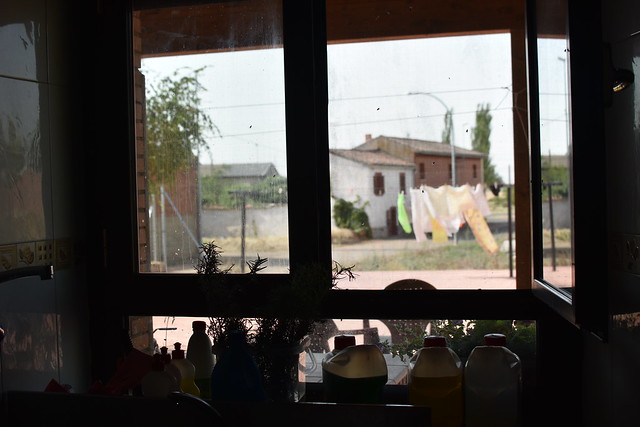Routines Remembered
April 1, 2020 1 Comment
I’m thinking a lot about routines. There are small things that were part of my life just a few weeks ago that now seem irreparably lost – cups of coffee & chats with strangers, our usual spot in the bar for trivia night, the assortment of people I saw every day: students roaming into my office during break for snacks or conversation, coworkers stopping by to check in about students, vent, or gossip.
I have been at home for approximately 16 days so far, in a weird limbo that isn’t quite free time, isn’t quite a full work schedule. None of this is quite like anything we’ve experienced before. I’m building and rebuilding my routines from scratch. As a teacher with relatively vast expanses of time during summer breaks, I know how necessary structure is – I tend to go bananas after about two days of break and have to make some kind of plan. However, this time there are other complications: a global pandemic, state & federal guidelines changing by the day or even hour, and a new level of exposure to both a constant stream of media and a constant undercurrent of existential dread. I know in order to get through whatever is next I need to intentionally organize my time.
In several ways I feel prepared for this task. For the first 17 years of my life I was homeschooled in a tiny farming town, giving me plenty of practice in handling loneliness & isolation. I also spent several years seriously considering a religious vocation and spending extended visits with various religious orders to discern which was the right fit – some of them cloistered but all adhering to a monastic schedule. Even though I intentionally went in other directions, what I carried with me will help me get through, especially my love of reading & writing.
More recently, last summer I spent 15 days volunteering at an albergue (pilgrim’s hostel) in a tiny town in the North of Spain. I’ve been thinking of those two weeks a lot recently, and the weeks I spent walking the Camino before.
The Camino has its own routines, the most ancient being the act of putting one foot in front of the other, beginning from various points across Europe & ending in Santiago de Compostela. Although the destination has remained the same, it isn’t necessarily the bones of St. James that pull people from all over the world to make the trek. It might be the routine of the walk that draws people, a routine both individual and communal. Getting up early. Bandaging your blisters. Hoisting your pack onto your back. Greeting others with a Buen Camino. Filling water bottles. Getting your pilgrim credential (like a passport) stamped at churches or bars along the way. Washing your clothes at the end of the day.
Ever since walking the Camino in 2012 I knew I wanted to volunteer as a hospitalera – the volunteers who run the donation based accommodations along the Camino. Volunteer hospitaleros are assigned for 15 days in an albergue, changing shifts on the 1st and the 16th of each month. These municipal or parochial albergues, run by towns and churches respectively, which are simple lodgings run by a small fee or a donation from the pilgrims who stay there each night. Many have communal meals. Almost all have bunk beds.
I signed up for a two week commitment last summer, because I knew I had the time off as a teacher and because we were trying to get pregnant, and I figured my free summers might be numbered. Soon after I got my acceptance letter as a hospitalera, I got other news: a diagnosis of uterine cancer. A rapidly scheduled surgery and the wonders of modern medicine meant that I did not have to put my summer plans on hold, although other things in my life were put more permanently on hold. By July I left for Spain physically unscathed (plus five small scars on my abdomen, minus one cancerous uterus) but determined to use that time to process.
Now I can see even more clearly how that time was a gift. I’m self-quarantined, borders are closed, and the Camino has slowed to a trickle as Spain has shut its doors against the virus. I’m looking at photos and I’m thinking more about those routines, turning them over and over in my mind, and sharing some of those here, if you care to join me. Read more of this post









